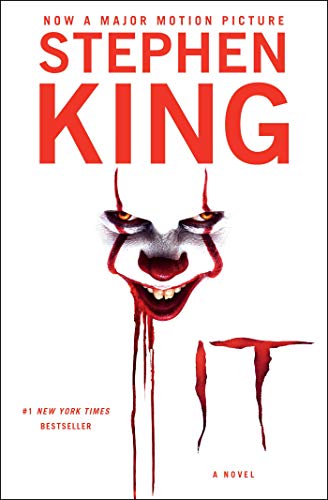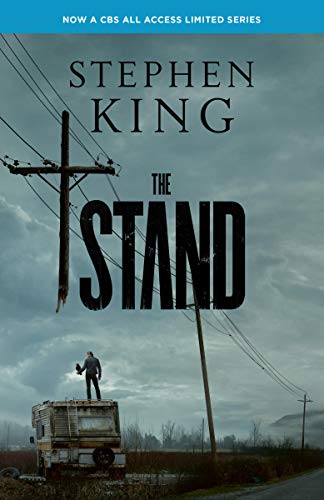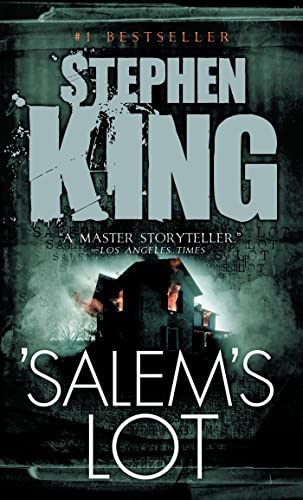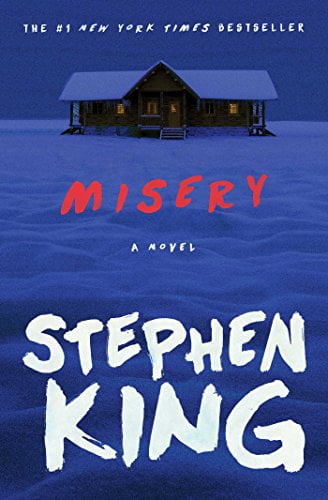5 Most Creepy Stephen King Novels That You Will Be Scared To Read at Night
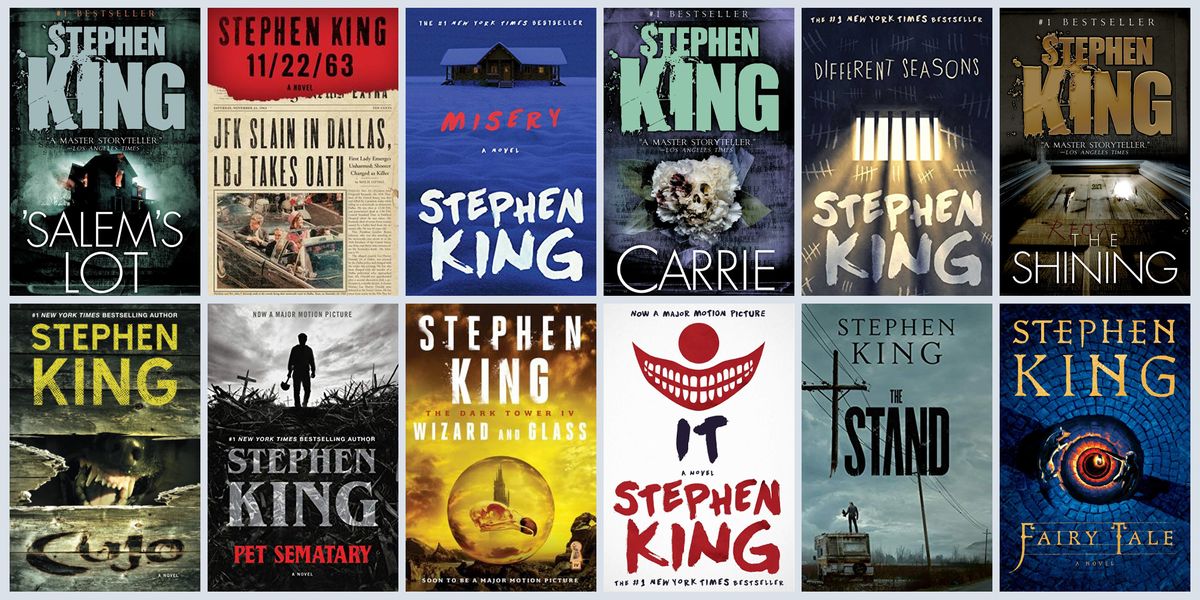
One of the most renowned and prolific authors of all time, Stephen King has made his name synonymous with terrifying stories and restless nights.
King’s career spans several decades, and he has enthralled readers everywhere with his fantastical writing and unrivaled command of the horror genre throughout that time.
His legacy as a writer is permanent; his writings have made him a household brand and a genuine icon of the thriller genre.
When talking about suspense and terror, Stephen King must be mentioned. His reputation as a writer of suspenseful works has made him a household name.
Each of King’s novels, short stories, and novellas transports readers to a world where the mundane and the fantastic are inextricably intertwined, where evil lurks around every corner, and where terror is palpable.
One of Stephen King’s greatest strengths as a writer is that he can make his characters seem so normal and everyday that readers can’t help but put themselves in their shoes. As we follow his protagonists down a perilous path, we feel their anxieties and share their frailties.
Whether it’s a spectral hotel in “The Shining” or a demonic clown in “It,” the horrors Stephen King’s characters experience dig into our innermost fears and force us to confront the darkness within ourselves.
Get ready for a sleepless night with our list of the five most hair-raising Stephen King novels that will haunt your dreams. Experience the gripping stories, twisted characters, and supernatural horrors that have made King a literary legend in the horror genre. Brace yourself for an unforgettable reading experience.
1. The Shining
(Read the detailed review here with comparison between book and movie)
“The Shining” is a horror novel written by Stephen King and published in 1977. The story follows Jack Torrance, an aspiring writer who takes a job as the winter caretaker of the isolated Overlook Hotel in Colorado with his wife, Wendy, and their son, Danny. As they settle in, it becomes apparent that the hotel has a dark history, and it begins to affect each member of the family in different ways.
The novel opens with Jack being interviewed for the job by Stuart Ullman, the manager of the Overlook Hotel. Jack has a troubled past, including a history of alcoholism and anger issues, but he hopes that this job will help him get his life back on track and provide him with the time and solitude he needs to write his novel. Ullman warns Jack about the hotel’s history of violence and explains that it is built on an Indian burial ground. Jack brushes off the warning, believing that it is just a myth.
As the family arrives at the hotel, they are greeted by the cook, Dick Hallorann, who notices that Danny has a psychic ability known as “the shining.” He explains to Danny that the hotel has a dark history and warns him to stay away from room 217, which he says is particularly dangerous.
Over time, the hotel’s supernatural forces begin to affect each member of the family. Jack becomes increasingly unstable, haunted by visions and urges to harm his family. Wendy becomes increasingly isolated and fearful, while Danny has terrifying visions of the hotel’s past and future.
As the winter progresses and the snow piles up, the family becomes trapped in the hotel with no escape. Jack’s mental state deteriorates further, and he becomes violent and dangerous, eventually succumbing completely to the hotel’s influence. He tries to kill Wendy and Danny, but they manage to fight him off and lock him in the hotel’s pantry.
In the end, Dick Hallorann arrives at the hotel, but he is killed by Jack, who has escaped from the pantry. Wendy and Danny are forced to flee into the hotel’s snowy maze, where they manage to elude Jack long enough for him to succumb to the elements and die.
The novel ends with Wendy and Danny being rescued and taken to safety, while the hotel is destroyed in an explosion caused by a faulty boiler. It is left open to interpretation whether the hotel’s supernatural forces truly exist or are simply a product of the characters’ imaginations.
Overall, “The Shining” is a terrifying tale of isolation, supernatural forces, and the dark depths of the human psyche. It has become a classic of the horror genre and a staple of Stephen King’s impressive body of work.
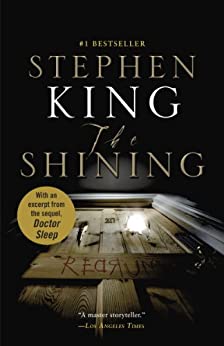
2. It
“It” is a horror novel written by Stephen King and published in 1986. The story is set in the small town of Derry, Maine and follows a group of seven friends, known as the Losers Club, who are terrorized by an evil entity that takes the form of a clown named Pennywise.
The novel opens with a horrific scene in which a young boy named Georgie Denbrough is killed by Pennywise while playing with a paper boat in the rain. In the aftermath of the tragedy, the Losers Club comes together and forms a bond over their shared experiences of being bullied and feeling like outcasts.
As the story progresses, the Losers Club begins to experience terrifying visions and encounters with Pennywise, who takes on many forms that prey on their deepest fears and insecurities. The group learns that Pennywise is a supernatural entity that awakens every 27 years to feed on the fear of children, and that it has been responsible for a series of disappearances and murders in Derry over the years.
The Losers Club decides to confront Pennywise and end its reign of terror once and for all. They descend into the sewers beneath Derry, where Pennywise has made its lair, and engage in a brutal battle with the entity. In the chaos that follows, several members of the group are killed or severely injured.
In the end, the surviving members of the Losers Club manage to defeat Pennywise by confronting their fears and using the power of their friendship to overcome the entity’s influence. They vow to return to Derry if Pennywise ever awakens again and continue the fight against the evil that lurks in the town.
Throughout the novel, King interweaves themes of childhood trauma, grief, and the power of memory. He also explores the idea that evil is not just a physical force but a psychological one, and that it can manifest in the darkest corners of the human mind.
“It” has become a classic of the horror genre and one of Stephen King’s most popular and enduring works. Its themes and imagery have resonated with readers for decades, and it has inspired numerous adaptations, including a 1990 miniseries and a 2017 feature film.
3. The Stand
“The Stand” is a post-apocalyptic novel written by Stephen King and published in 1978. The story is set in a world devastated by a deadly plague that has wiped out most of the human population, and follows a group of survivors as they struggle to rebuild society and confront a malevolent force that threatens to destroy them.
The novel begins with the outbreak of a deadly virus known as Captain Trips that is accidentally released from a government laboratory. The virus spreads rapidly and kills over 99% of the population within weeks. The survivors are left to fend for themselves in a world that has been reduced to chaos and anarchy.
As the story unfolds, the survivors begin to form groups and communities in an attempt to rebuild civilization. Two groups emerge as the main protagonists of the story: the Free Zone, a community of survivors in Boulder, Colorado led by the compassionate and charismatic Mother Abagail, and the Dark Man, a demonic figure who represents the evil that has been unleashed by the plague and who gathers his followers in Las Vegas, Nevada.
The two groups are on a collision course, as the Dark Man seeks to destroy the Free Zone and establish his own totalitarian regime. A small group of survivors, including the protagonist Stu Redman, are sent on a dangerous mission to confront the Dark Man and his followers, who have begun to gain supernatural powers.
In the climactic final battle, the survivors are able to defeat the Dark Man and his followers, but at a great cost. Many of the main characters, including Mother Abagail and Stu’s love interest Frannie Goldsmith, are killed in the battle. The survivors are left to pick up the pieces and begin the slow process of rebuilding a shattered world.
Throughout the novel, King explores themes of good versus evil, the nature of humanity, and the importance of community and connection. He also draws on biblical imagery and symbolism, particularly in the character of Mother Abagail, who represents a Christ-like figure.
“The Stand” has become a classic of the post-apocalyptic genre and one of Stephen King’s most beloved and influential works. It has inspired numerous adaptations, including a 1994 television miniseries and a 2020 limited series. Its themes of resilience, hope, and the power of human connection continue to resonate with readers today.
4. Salem’s Lot
“Salem’s Lot” is a horror novel written by Stephen King and published in 1975. The story is set in the small town of Jerusalem’s Lot, Maine and follows a group of people as they confront a growing vampire menace that threatens to consume the entire town.
The novel begins with the arrival of a new resident, a writer named Ben Mears, who has returned to his childhood hometown to write a book about the old Marsten House, a notorious haunted house in the town. Ben’s arrival coincides with a series of strange and violent incidents that suggest something sinister is lurking in the shadows.
As the story unfolds, it becomes clear that the town is being overrun by vampires. The main vampire, a former antiques dealer named Kurt Barlow, has set up shop in the Marsten House and is using it as a base of operations to turn the townspeople into his undead minions.
Ben teams up with a small group of people, including the town doctor and a young boy named Mark Petrie, to stop the vampire menace. They realize that the only way to defeat the vampires is to destroy Barlow himself. In a climactic battle, Ben and Mark confront Barlow and his followers in the Marsten House and succeed in killing the vampire.
In the aftermath of the battle, the survivors realize that the vampire menace is not completely vanquished. They know that they must remain vigilant and continue to fight against the forces of darkness that threaten their town.
Throughout the novel, King explores themes of evil, corruption, and the nature of fear. He also draws on traditional vampire lore and mythology, while adding his own unique twist to the genre. The novel is notable for its chilling atmosphere and vivid depiction of small-town life, as well as its memorable cast of characters.
“Salem’s Lot” has become a classic of the horror genre and one of Stephen King’s most popular and enduring works. It has inspired numerous adaptations, including a 1979 television miniseries and a 2004 feature film. Its themes of darkness and the fight against evil continue to resonate with readers today.
5. Misery
“Misery” is a psychological thriller novel written by Stephen King and published in 1987. The story follows the ordeal of a successful romance novelist named Paul Sheldon, who is kidnapped and held captive by one of his most devoted fans, Annie Wilkes.
The novel begins with Paul Sheldon being rescued from a car accident by Annie, who is a former nurse. She takes him to her remote home in the Colorado mountains to care for him, but he soon realizes that she has no intention of letting him go. Annie reveals that she is a huge fan of Paul’s “Misery” series of novels, and becomes enraged when she discovers that he has killed off her favorite character, Misery Chastain, in his latest book.
As Paul recovers from his injuries, Annie forces him to write a new “Misery” novel, with the condition that he must bring Misery back to life. Paul soon realizes that he is trapped, and that Annie is a dangerous and unstable woman who will stop at nothing to ensure that he writes the book to her satisfaction.
As the story progresses, Paul’s situation becomes increasingly dire. Annie’s behavior becomes more and more erratic, and she begins to abuse him both physically and mentally. Paul also learns that Annie has a dark past and a history of violence, which only adds to his fear and desperation.
In a climactic final confrontation, Paul is able to turn the tables on Annie and ultimately escape from her clutches. He returns to civilization, but is left traumatized by his experience and struggles to come to terms with the trauma he has endured.
Throughout the novel, King explores themes of obsession, addiction, and the blurred lines between reality and fiction. He also delves into the power dynamic between creators and their fans, and the potential dangers of celebrity worship.
“Misery” has become a classic of the psychological thriller genre and one of Stephen King’s most popular and influential works. It has inspired numerous adaptations, including a 1990 feature film starring Kathy Bates as Annie Wilkes, who won an Academy Award for her performance. Its themes of obsession and the dark side of fandom continue to resonate with readers and viewers today.
It is impossible to exaggerate Stephen King’s significance to the literary world. His name is now inextricably linked to the macabre, and his stories have influenced countless writers to go there themselves. His work has had a far-reaching impact on culture at large, not just the horror sub-genre. His stories have been made into movies, TV shows, and even comic books, all of which have contributed to his status as a cultural icon.
In conclusion, Stephen King’s works have had an enduring impression on the literary landscape. He has risen to the top of his field as a result of his extraordinary talent for creating tension, developing believable characters, and writing eerily compelling stories. His reputation now ensures readers of a high-caliber product, one that will keep their attention and leave a lasting impression. As we lose ourselves in the pages of a Stephen King novel, we do so knowing that we are in the capable hands of a master storyteller.
Disclaimer: This blog post may contain affiliate links. If you click on these links and make a purchase, The Crimson Books may earn a small commission at no additional cost to you.
About the Author

Benjamin Hughes is a literary enthusiast with a lifelong passion for books. He has an extensive knowledge of classic literature and a profound interest in exploring the depths of philosophical and existential themes.
With his articulate writing style, he guides readers through complex narratives and leaves them with a deeper understanding and appreciation for the written word.

